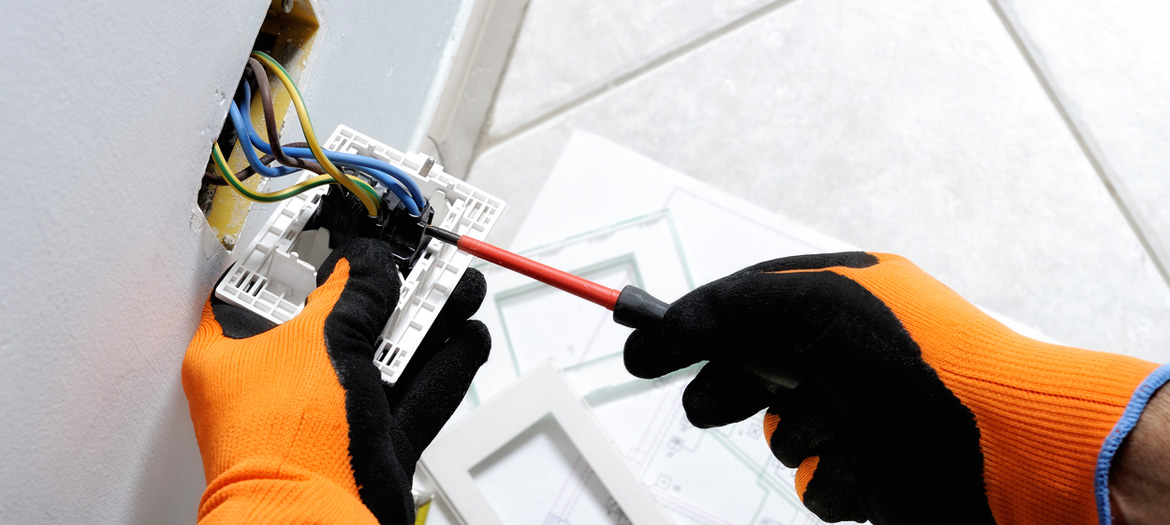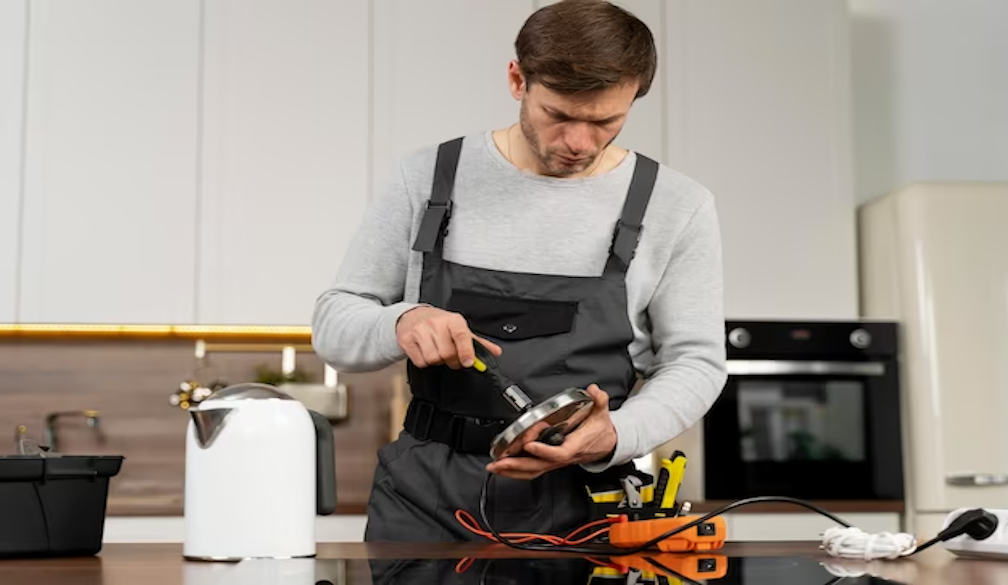Usual Electrical Troubles Every Home Owner Should Know Concerning
Property owners frequently encounter different electrical issues that can influence safety and security and performance. Concerns like flickering lights and stumbled circuit breakers are a lot more common than lots of understand. These circumstances can indicate deeper electric problems that warrant interest. Recognizing the threats and indications linked with obsolete wiring and dead outlets is important. What actions can be required to stop these issues? Discovering these common electric concerns could disclose important insights for maintaining a risk-free home setting.

Flickering Lights: Causes and Solutions
Why do some home owners experience flickering lights? Flickering lights can be an usual inconvenience, usually indicating underlying electric issues. One main reason is faulty or loose connections within lights or circuitry, which can result in recurring power supply. Furthermore, making use of high-wattage appliances on the same circuit might trigger voltage changes, resulting in flickering or dimming. An additional possible concern is an overloaded circuit, where too numerous gadgets draw power at the same time, stressing the electrical system. Additionally, degraded or outdated wiring can contribute to inconsistent electrical flow. In many cases, flickering lights might signify a problem with the home's electrical panel or service line. Homeowners should address flickering lights immediately to stay clear of potential hazards. Solutions may consist of tightening up connections, redistributing device lots, or consulting a qualified electrician for a comprehensive assessment. Recognizing the origin cause can help ensure a risk-free and secure electrical system in the home.
Tripped Circuit Breakers: What You Need to Know
Have property owners ever before wondered what creates their breaker to trip unexpectedly? This common concern usually develops from an overload of electrical circuits, where as well lots of devices attract power at the same time. In such situations, the circuit breaker acts as a security mechanism, interrupting the circulation of electrical energy to stop getting too hot and prospective risks. An additional constant reason is a short circuit, which occurs when an online wire get in touches with a neutral cable, developing a surge of electricity that trips the breaker. Ground faults can additionally lead to stumbled breakers; these take place when an online wire touches the ground or a grounded surface, presenting major safety and security risks. House owners should on a regular basis evaluate their use of high-wattage appliances to prevent overloading circuits. In addition, understanding the function of circuit breakers can aid them react properly throughout a journey, ensuring their home stays properly maintained and risk-free.
Out-of-date Circuitry: Signs and Dangers
Outdated electrical wiring can posture substantial dangers to property owners, often going unnoticed until issues develop. Residences constructed prior to the 1980s might still have aluminum electrical wiring or knob-and-tube systems, which are no more considered safe. Indications of obsolete circuitry consist of flickering lights, often tripped circuit breakers, or burning scents near outlets. These indicators may suggest that the electric system is loaded down or deteriorating.Additionally, property owners might discover burn marks around buttons or electrical outlets, which can show getting too hot. The threat of electrical fires noticeably boosts with out-of-date electrical wiring, as these systems were not designed to deal with modern electric tons. Homeowners are urged to have their electrical wiring evaluated routinely, especially when renovating or adding brand-new devices. By recognizing these indicators early, they can prevent harmful circumstances and keep a much safer living environment. Updating to present electric requirements is a proactive action in maintaining home safety and security and performance.
Often Blown Fuses: Troubleshooting Tips
Frequent blown merges can indicate underlying electric issues that may come from out-of-date electrical wiring or overloaded circuits. Home owners experiencing this issue should initially identify the appliances connected to the affected circuit. It is advisable to prevent making use of several high-wattage tools at the same time, as this can lead to circuit overload. If the issue lingers, inspecting the circuit box for indicators of wear or damage is vital; a defective circuit box might require replacement.Additionally, examining for loosened connections within the circuit can assist protect against future occurrences. Property owners ought to likewise validate that the fuses being utilized are of the proper amperage, as using an incorrect fuse can intensify the issue. If these repairing tips do not fix the issue, speaking with an accredited electrical expert is recommended to examine the electric system further. Attending to these issues promptly can help mitigate risks and ensure the safety of the home's electric framework.
Dead Electrical Outlets: Common Reasons and Solutions
When a homeowner experiences a dead outlet, it can often give aggravation and confusion. Numerous common reasons might bring about this issue. One regular perpetrator is a tripped circuit breaker, which can be quickly reset. If any breakers are in the off setting, property owners ought to inspect their electric panel to inspect. An additional opportunity is a malfunctioning outlet itself, which may call for substitute. Additionally, loose electrical wiring connections within the outlet can interfere with power circulation, making inspection essential.Sometimes, the problem might stem from an overloaded circuit, particularly when several devices are attached. In such instances, rearranging the electrical lots can solve the problem. Homeowners ought to likewise consider the age of their circuitry; older systems may call for updates to satisfy contemporary electric demands. If these actions do not correct the situation, consulting a qualified electrical contractor is advisable to assure safety and appropriate medical diagnosis.
Electrical Shocks: When to Be Worried
Exactly how can homeowners establish whether an electrical shock warrants worry? House owners should first examine the extent and context of the shock. A light fixed shock, frequently really felt when touching steel objects, is typically harmless and typical. Nonetheless, if the shock occurs while engaging with a plugged-in device or outlet, it may indicate a more major issue.The place and regularity of the shocks are crucial. Repeated shocks from the very same source, especially in wet areas like washrooms or cooking areas, can signal defective wiring or insufficient grounding. House owners should additionally think about the experience of the this article shock; a shock that creates discomfort or contraction you could try this out is a lot more disconcerting than a simple tingle.If there's any unpredictability, it is suggested to speak with a qualified electrician. Overlooking potential electric risks can cause severe security dangers, consisting of fire or serious injury.
Overloaded Circuits: Prevention and Security Procedures
Overloaded circuits present significant threats in property settings, commonly bring about electrical fires or tools damage (ASP Level 2 Electrician). Home owners have to recognize the indicators of an overloaded circuit, such as frequently stumbled breakers or lowering lights. Executing preventative security methods can help mitigate these dangers and ensure a more secure living atmosphere
Acknowledging Overloaded Circuits
What indicators suggest that a circuit may be overwhelmed? House owners should be cautious for numerous crucial signs. Often stumbled circuit breakers or blown integrates recommend too much tons on the circuit. Dimming or flickering lights, particularly when other devices are in usage, can signify an inadequate power supply. In addition, electrical outlets or switches that feel warm to the touch might show overheating, a potential fire risk. Unusual humming audios from electrical outlets also require interest, as they can signify electric concerns. If home appliances operate inefficiently or stop working to start, it might be an indicator of an overloaded circuit. Recognizing these signs early can assist avoid severe electric issues and advertise a safer home setting.
Preventive Security Practices
To preserve a safe and efficient electrical system, home owners need to carry out precautionary security methods that deal with possible circuit overloads. One efficient procedure is to avoid linking also numerous devices to a solitary outlet, as this can go beyond the circuit's capability. Using power strips with integrated circuit breakers can assist distribute power securely. Property owners ought look at this site to additionally frequently evaluate cords and devices for damage and replace any type of damaged equipment immediately. It is crucial to ensure that breaker are functioning appropriately and to be knowledgeable about the total electrical power being used in each circuit. Additionally, speaking with a certified electrician for regular inspections can identify potential concerns prior to they rise, guaranteeing a safer living environment and prolonging the lifespan of electrical systems.
Frequently Asked Inquiries
Exactly how Commonly Should I Have My Electric System Inspected?
Regular evaluations of electric systems are recommended every 3 to 5 years. House owners need to take into consideration much more regular checks if they experience problems, embark on remodellings, or live in older homes to guarantee safety and security and compliance.
Can I Repair Electric Troubles Myself or Employ a Professional?

What Are the Indicators of an Electrical Fire Threat?
Signs of an electrical fire danger include frequently stumbled circuit breakers, flickering lights, melting smells, blemished electrical outlets, or warm, buzzing cables. Home owners need to stay watchful and seek professional aid if any one of these signs exist.
Just how Do I Know if My Home Needs an Electric Upgrade?
To identify if a home requires an electrical upgrade, signs consist of regular breaker journeys, outdated circuitry, inadequate outlets, flickering lights, and the existence of older electric panels, indicating potential safety threats and inefficiency.
Are There Certain Security Tips for Do It Yourself Electric Job?
When considering DIY electric job, one need to always turn off power, make use of protected tools, verify circuit performance, follow regional codes, and seek advice from specialists for complicated tasks to assure security and protect against accidents. One more possible concern is an overloaded circuit, where too many gadgets attract power concurrently, stressing the electric system. The danger of electric fires significantly raises with out-of-date electrical wiring, as these systems were not developed to manage contemporary electric loads. Frequent blown integrates can show underlying electric problems that may stem from obsolete circuitry or overloaded circuits. To keep a efficient and risk-free electrical system, home owners must execute precautionary security practices that deal with potential circuit overloads. Level 2 Electrician Sydney. Indicators of an electrical fire danger include often tripped circuit breakers, flickering lights, shedding smells, tarnished electrical outlets, or warm, humming cables